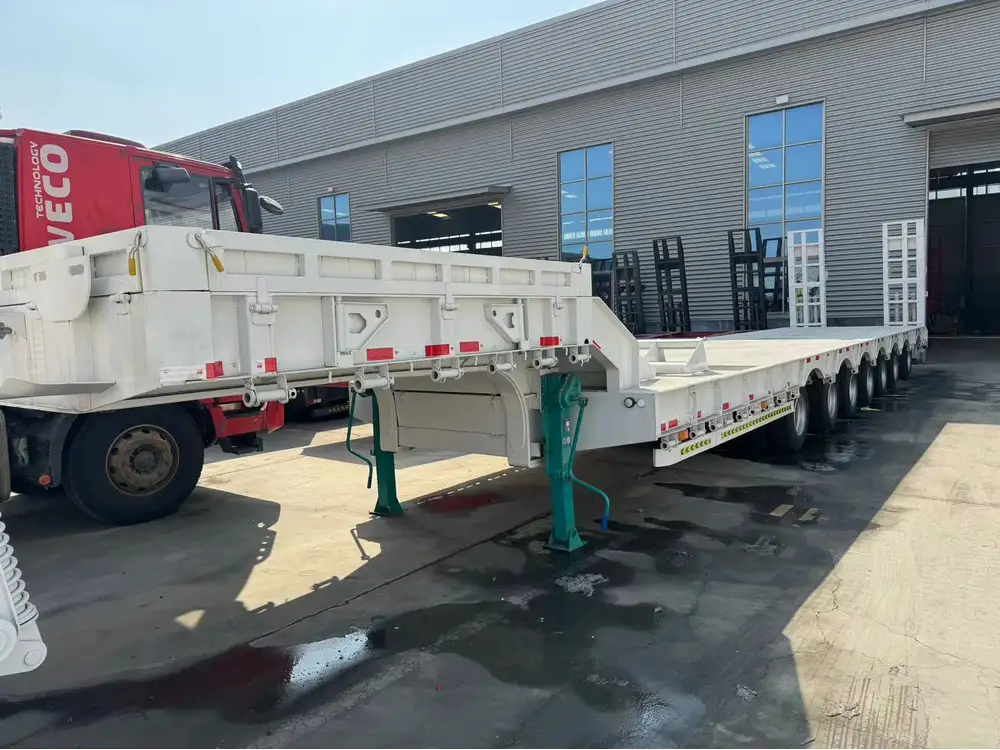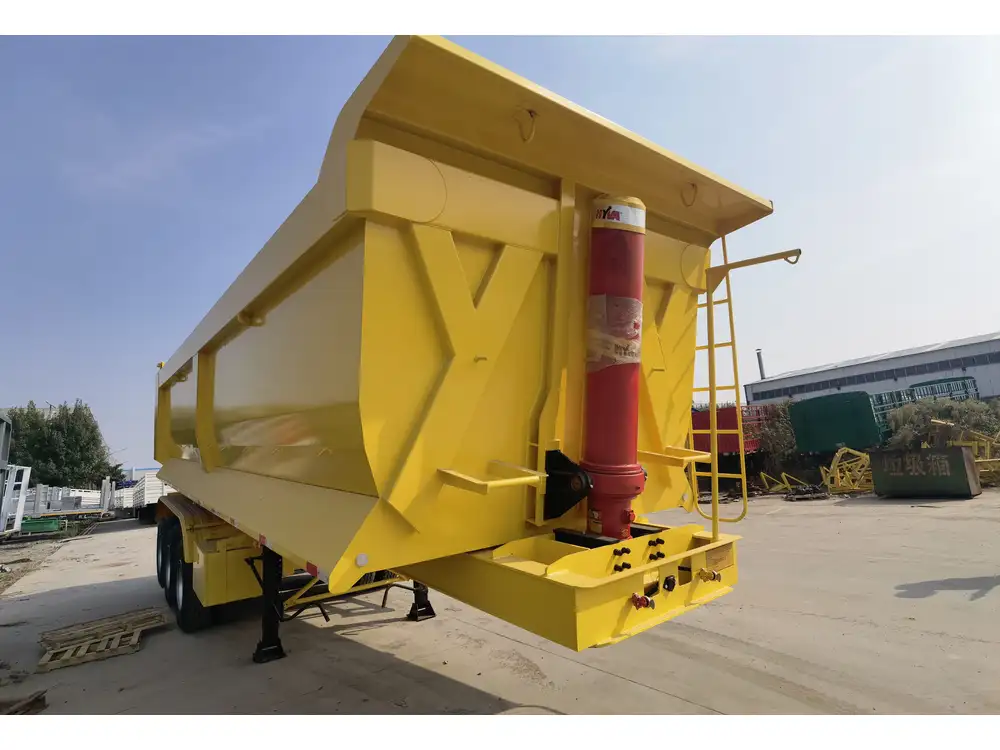In the world of transportation and logistics, maintaining efficiency is crucial, especially when it involves heavy-duty vehicles such as semi-trailers. One intriguing phenomenon that captures the attention of many is the process known as “car under the semi-trailer.” This process involves a complex interplay of engineering, design, and logistical management. In this article, we will dissect the mechanics, the innovations, and the various factors influencing the effective transport of cars beneath semi-trailers.
Understanding the Concept: The Basics of Car Transport Under Semi-Trailers
What Is a Semi-Trailer?
A semi-trailer is a vehicle designed for transporting freight, characterized by its lack of a front axle. It relies on a tractor unit to connect it, supported at the front by the truck’s fifth wheel. Semi-trailers are integral to the trucking industry, enabling the smooth transportation of goods over long distances.

The Mechanism of Car Transportation
Transporting cars under semi-trailers raises several pertinent questions:
- How is space optimized?
- What engineering principles are applied?
- What safety measures are taken?
By examining these questions, we can better understand how this technique functions.
Engineering and Design Innovations
Trailer Design Parameters
The successful practice of carrying vehicles beneath semi-trailers hinges on several design considerations, such as:
- Weight Distribution: Maintaining balance between the trailer and the load is critical to prevent tipping and improve handling.
- Height Constraints: Designing the trailer to accommodate standard car dimensions while adhering to height regulations ensures compliance and safety.
- Loading Mechanisms: Efficient loading systems, such as hydraulic lifts, are imperative for safely placing and securing vehicles under the trailer.

Material Selection
The choice of materials is paramount. Lightweight yet robust materials such as high-strength steel and aluminum alloys are frequently employed. These materials enhance the durability of the semi-trailer while minimizing weight, increasing fuel efficiency, and lowering transportation costs.
| Material Type | Advantages | Disadvantages |
|---|---|---|
| High-Strength Steel | Strong and durable | Heavier than alternatives |
| Aluminum Alloys | Lightweight, corrosion-resistant | Can be less durable under extreme stress |
Optimization of Space and Logistics
Techniques for Efficient Cargo Loading
Efficient cargo loading strategies are vital in maximizing transport efficiency. Semi-trailer manufacturers have developed various techniques, including:
- Modular Design: Allows flexibility in accommodating different types of vehicles.
- Stacking Systems: Vehicles can be stacked vertically, optimizing space utilization.
- Securement Systems: Utilizing advanced securement systems, such as straps and clamps, ensures that vehicles remain stable during transport.

Best Practices for Transportation Logistics
To ensure the safest and most efficient delivery of cars, consider the following best practices:
- Pre-Planning Loads: Analyze the types and dimensions of vehicles beforehand to determine the optimal loading configuration.
- Utilizing Technology: GPS and telematics systems aid in route planning, tracking, and monitoring vehicle condition.
Challenges in Transporting Cars Under Semi-Trailers
Regulatory Compliance
Transportation regulations vary from region to region and can affect loading methods and trailer design. Complying with weight limits, height restrictions, and safety standards is essential.

Safety Measures
Safety is non-negotiable when it comes to transporting vehicles under semi-trailers. Key measures include:
- Regular Maintenance Inspections: Conducting regular inspections on both the trailer and vehicles ensures that all systems are functioning properly.
- Risk Assessment Procedures: Identifying potential hazards in the loading and unloading process allows companies to implement preventative measures.
Case Studies: Real-World Applications and Success Stories
Case Study 1: Automotive Manufacturer Logistics
One leading automotive manufacturer implemented an innovative semi-trailer design featuring customized compartments for their vehicles. By collaborating closely with designers, they achieved enhanced space efficiency, allowing up to 20% more vehicles to be transported per trip. This initiative not only reduced transportation costs but also improved delivery times.

Case Study 2: Ride-Share Programs
A ride-sharing service adopted semi-trailers to transport electric scooters for urban commuting. By utilizing semi-trailers outfitted with specialized loading systems, they successfully overcame challenges associated with traditional delivery methods, reducing operational costs and carbon footprint significantly.
Future Trends in Semi-Trailer Transportation
Advancement in Hybrid Technologies
Emerging hybrid technologies promise not only to improve fuel efficiency but also to offer environmental benefits. As electric vehicles (EVs) gain traction, the incorporation of electric motors in semi-trailer operations will likely bring new configurations and space optimization techniques.

Automation and Autonomous Vehicles
The rise of automation in logistics, particularly with autonomous trucks, is set to redefine how semi-trailers are utilized. Enhancements in vehicle tracking, real-time data analytics, and autonomous loading systems could result in substantial efficiency gains and cost reductions.
User Engagement: Frequently Asked Questions
How do companies ensure the vehicles don’t get damaged during transportation?
Companies utilize several methods to protect vehicles, including padded securement systems, specialized loading equipment to minimize jolts, and regular maintenance checks to address any potential issues before departure.

Is it cost-effective to transport cars under semi-trailers?
Yes, transporting cars under semi-trailers optimizes space and maximizes fuel efficiency. The lower number of trips required ultimately results in reduced shipping costs, making it an economically viable option.
Are there specific regulations for transporting vehicles in semi-trailers?
Yes, regulations differ significantly by state and country. Companies must ensure compliance with local laws governing vehicle dimensions, weight limits, and transport permits.
Conclusion: The Importance of Innovation in Car Transport
In conclusion, understanding how cars are transported beneath semi-trailers is not only fascinating but indicative of the broader trends and innovations within the transportation industry. The engineering challenges, design innovations, and logistical strategies involved are critical in enhancing the efficiency and safety of vehicle transport. As technology evolves, the practices surrounding semi-trailer operations will likely continue to advance, resulting in even more streamlined and economically feasible solutions for the logistics sector.
Equipped with this comprehensive understanding, stakeholders in the trucking and automotive industries can better navigate the complexities of vehicle transportation under semi-trailers, contributing to a more efficient and sustainable future.



